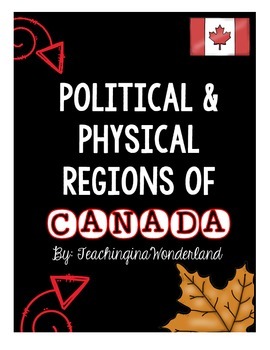Grade 4, Unit 2: Political and Physical Regions of Canada (Ontario Social Stu.)
- PDF
What educators are saying
Description
The "Political and Physical Regions of Canada" activity packet is aligned with the Grade 4 Social Studies curriculum expectations. This activity packet includes 3 lines of inquiry for students to complete. Through these inquiry assignments students practice gathering, organizing, interpreting/analyzing and presenting information on the political and physical regions of Canada. This packet covers all 8 physical regions and the 13 provinces/territories in Canada. This activity packet is meant to supplement your lessons for the Political and Physical Regions of Canada unit. This packet includes 10 lessons (including the inquiry assignment lessons). The goal of this packet is for students to construct their own knowledge and work on gathering and researching information and putting it all together to form several presentations of various formats (e.g., powerpoint, poster, report).
The three lines of inquiry are as follows:
1. Research a Region: Students choose a region to research. Students find out where the region is located, the climate, physical features, natural resources, industries and recreational activities for each region. Students then compare their researched physical region to another physical region.
2. Research a Province/Territory: Students choose a province or territory to research. Students find out where the province/territory is located using directional language (e.g., to the west of Alberta), identify the capital city, who lives in the province or territory, what the climate and physical features of the province or territory are and the dominant industries in the province or territory. Students also identify one to two pieces of interesting information about the province/territory. Students then will compare their researched province or territory to another province/territory.
3. The Impact of Industries: Students, given a research topic or question, will research the positive and negative impact that various industries (logging, mining, oil drilling, fishing) have on the natural environment. Students will also identify what that particular industry is doing to give back to the environment.
If you have any questions, please feel free to let me know. Maps are included in this packet and there is a student colour by number physical region map also included. All readings for all eight physical regions are included as well as readings for all 13 provinces/territories.





